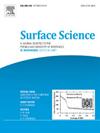Hydrogen complexes on single-atom alloys: A combined DFT – Kinetic Monte Carlo study
IF 1.8
4区 化学
Q3 CHEMISTRY, PHYSICAL
引用次数: 0
Abstract
Single-Atom Catalysts (SACs) are a new class of solid catalysts with potential applications in a wide spectrum of chemical reactions. The family of Single Atom Alloys (SAAs) is promising for hydrogen-related reactions. One interesting aspect of SACs is that their chemistry is reminiscent of coordination chemistry, and a pertinent example is the formation of dihydrogen complexes in hydrogen-related reactions with similarities to coordination compounds. The formation of these hydrogen complexes has been suggested also for SAAs, based on density functional theory (DFT) calculations. In this work, we conducted a study combining DFT with Kinetic Monte Carlo (KMC) to investigate the formation of hydrogen complexes on a set of SAAs. We scrutinized 14 SAAs with DFT and performed KMC simulations on three relevant cases. Our study considers explicitly the kinetic barriers for the formation and decomposition of these complexes to elucidate the kinetics of the adsorption of molecular H2 on SAAs. The results indicate that the new species can be relevant depending both on their stability and the reaction barriers involved. In particular, we focused on three test cases, Co@Rh(111), Pd@Rh(111) and Co@Au(111) showing that the formation of dihydrogen species, H2*, where * indicates an adsorbed complex, can affect the formation of the complex from molecular H2.

单原子合金上的氢配合物:DFT -动力学蒙特卡罗联合研究
单原子催化剂(SACs)是一类新型的固体催化剂,在广泛的化学反应中具有潜在的应用前景。单原子合金(SAAs)家族在氢相关反应中具有广阔的应用前景。SACs的一个有趣的方面是它们的化学性质使人想起配位化学,一个相关的例子是在与氢相关的反应中形成与配位化合物相似的二氢配合物。基于密度泛函理论(DFT)的计算,也提出了这些氢配合物的形成。在这项工作中,我们进行了一项结合DFT和动力学蒙特卡罗(KMC)的研究,以研究一组SAAs上氢配合物的形成。我们用DFT分析了14个SAAs,并对三个相关案例进行了KMC模拟。我们的研究明确考虑了这些配合物形成和分解的动力学障碍,以阐明分子H2在SAAs上的吸附动力学。结果表明,新物种的相关性取决于它们的稳定性和所涉及的反应屏障。我们特别关注了Co@Rh(111)、Pd@Rh(111)和Co@Au(111)三个测试用例,结果表明二氢物质H2*的形成,其中*表示吸附的络合物,可以影响H2分子络合物的形成。
本文章由计算机程序翻译,如有差异,请以英文原文为准。
求助全文
约1分钟内获得全文
求助全文
来源期刊

Surface Science
化学-物理:凝聚态物理
CiteScore
3.30
自引率
5.30%
发文量
137
审稿时长
25 days
期刊介绍:
Surface Science is devoted to elucidating the fundamental aspects of chemistry and physics occurring at a wide range of surfaces and interfaces and to disseminating this knowledge fast. The journal welcomes a broad spectrum of topics, including but not limited to:
• model systems (e.g. in Ultra High Vacuum) under well-controlled reactive conditions
• nanoscale science and engineering, including manipulation of matter at the atomic/molecular scale and assembly phenomena
• reactivity of surfaces as related to various applied areas including heterogeneous catalysis, chemistry at electrified interfaces, and semiconductors functionalization
• phenomena at interfaces relevant to energy storage and conversion, and fuels production and utilization
• surface reactivity for environmental protection and pollution remediation
• interactions at surfaces of soft matter, including polymers and biomaterials.
Both experimental and theoretical work, including modeling, is within the scope of the journal. Work published in Surface Science reaches a wide readership, from chemistry and physics to biology and materials science and engineering, providing an excellent forum for cross-fertilization of ideas and broad dissemination of scientific discoveries.
 求助内容:
求助内容: 应助结果提醒方式:
应助结果提醒方式:


